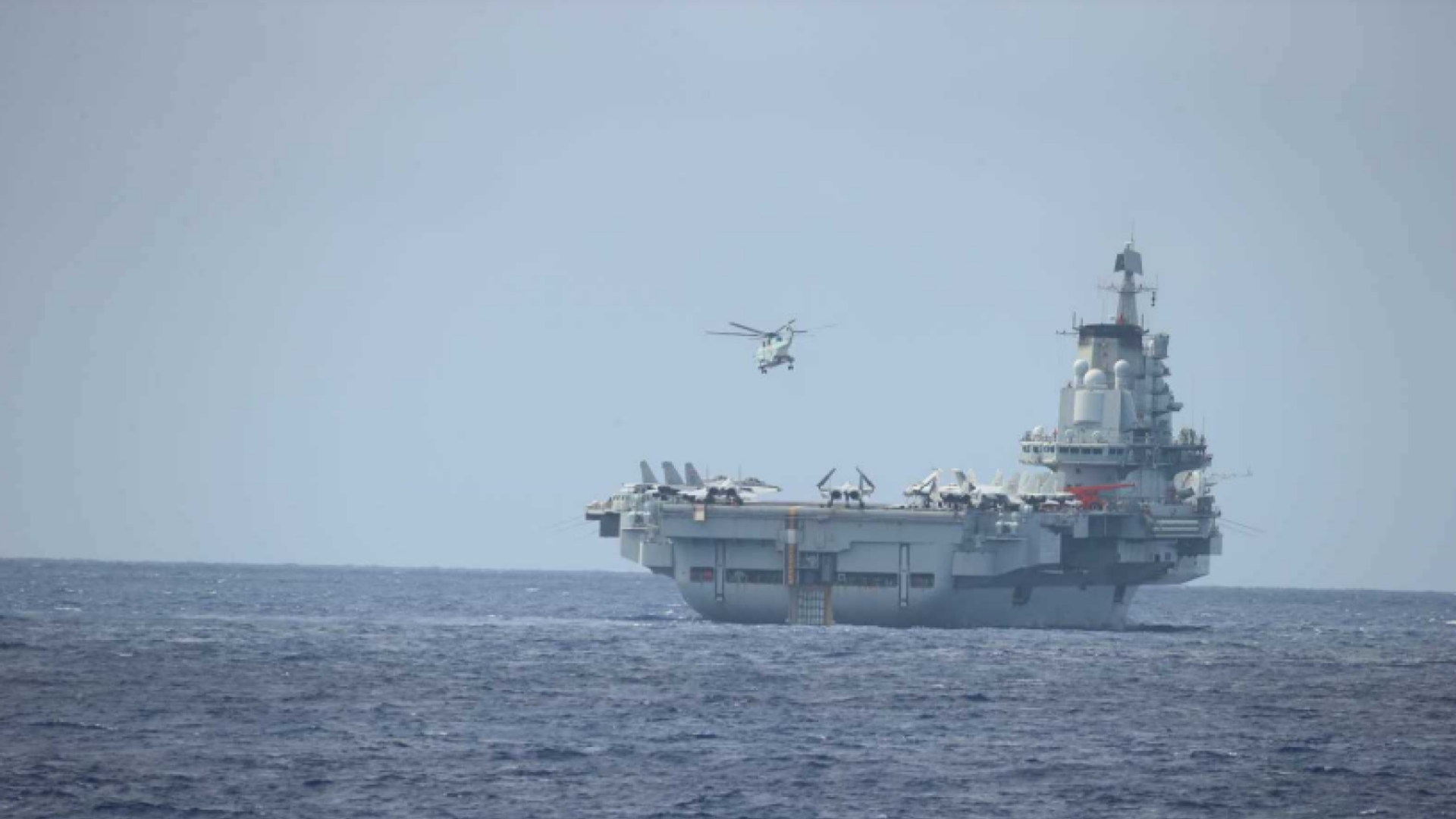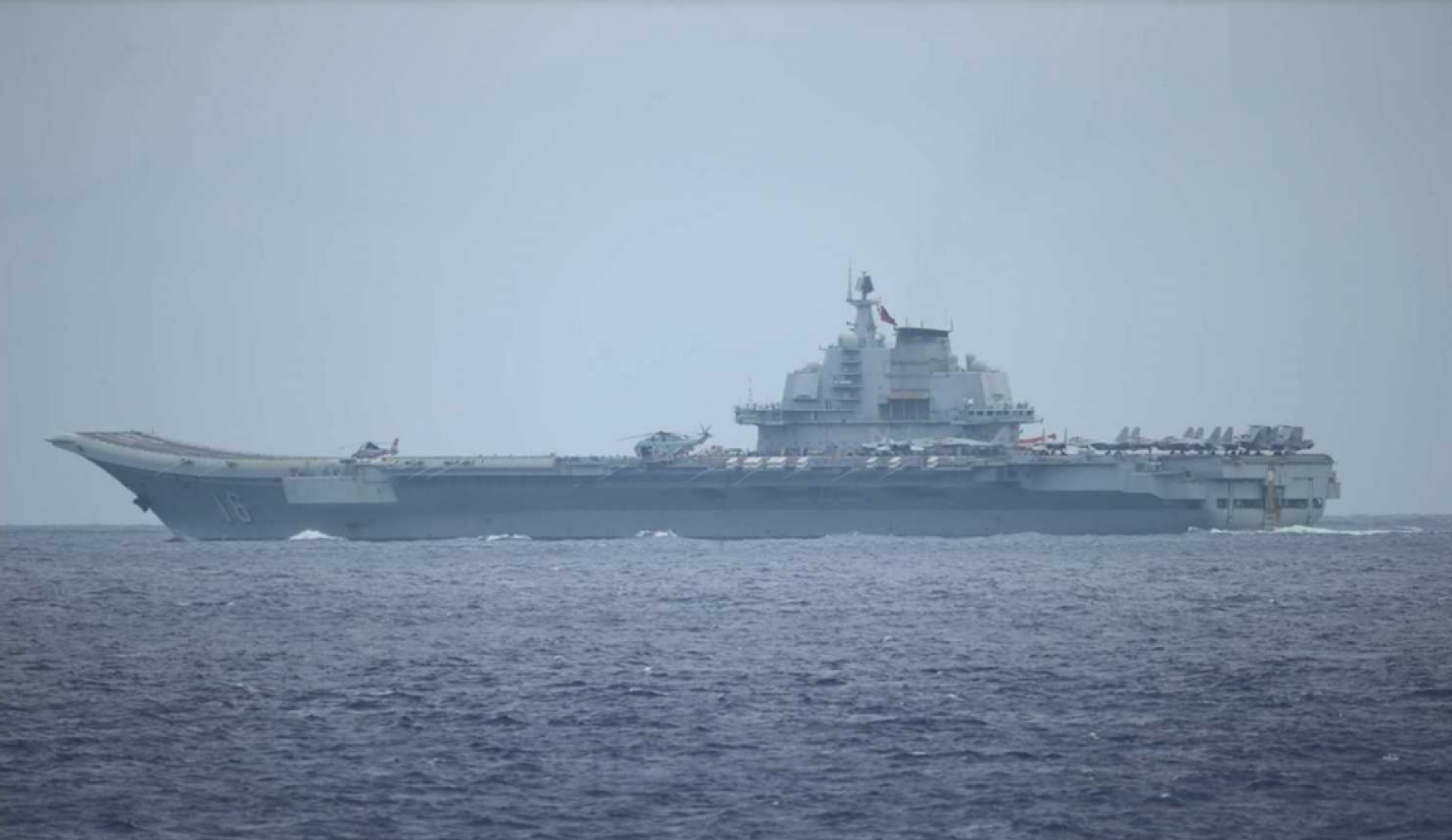‘More Intense’: China’s Naval Drills Give ‘Reference Point’ for Coming Third Carrier, Analysts Say
17:56 GMT 17.05.2022 (Updated: 18:03 GMT 17.05.2022)
Subscribe
Earlier this month, China’s People’s Liberation Army Navy (PLAN) dispatched its largest-ever carrier strike group to the Philippine Sea to carry out war games. Analysts looking at the drills have suggested they were an attempt to prepare the navy for the impending arrival of its third and largest aircraft carrier.
The aircraft carrier Liaoning led an eight-warship battle group in what PLAN senior spokesperson Gao Xiucheng described as “realistic combat training in the far sea of the West Pacific,” on the far side of Taiwan from the Chinese mainland. There, the Chinese ships were surrounded on all sides by adversarial territory, with Japan and the Philippines being allied with the United States and the US territory of Guam sitting on the sea’s eastern rim.
Experts also told the Global Times that “by hosting fighter jet drills right in front of monitoring by Japanese and potentially US forces, the PLA Navy showed its confidence amid its rising capabilities.” US and Japanese warships were also drilling nearby, including the aircraft carriers Izumo and USS Abraham Lincoln.
Shi Hong, the executive chief editor of the Chinese magazine Shipborne Weapons, told the Global Times that American and Japanese warships make "perfect practice partners" for the Chinese drills.
Included in the battle group was a Type 055 guided-missile cruiser, China’s largest non-carrier warship, which recently demonstrated its ability to carry and fire hypersonic anti-ship missiles, for which few potential countermeasures exist.
Speaking to the South China Morning Post (SCMP), Taiwanese Naval Academy former instructor Lu Li-Shih suggested the drills were also intended to buttress the PLAN’s experience with advanced carrier operations, as the naval force still only has two aircraft carriers.
“The ongoing large-scale training operation aims to test and develop training guidelines and a doctrine for ship-borne aircraft carrier deck operations, high-sea logistic support and other details, which will provide a reference point for the navy’s third aircraft carrier, the Type 003,” Lu told the Hong Kong-based paper.
According to Japan’s joint staff, Liaoning and its air wing of J-15 “Flying Shark” fighters conducted cross-day-and-night carrier-based aircraft training while in the Philippine Sea. “[S]uch training is more intense compared with previous drills that were disclosed to the public,” Lu said.
The Global Times reported that the Liaoning conducted more than 100 air sorties in six days’ time.
“This time, it’s not presumptuous to surmise that the Liaoning is further building on these experiences and using them to push the development of carrier strike group operating concepts … and quite clearly pushing the crew (especially the J-15 aircrews) hard on this,” Colin Koh, a research fellow with the S Rajaratnam School of International Studies at Nanyang Technological University in Singapore, told the SCMP.
Analysts further noted that the Liaoning has been operating for more than 20 days, pushing the limits of the ship, which is of the same design as Russia’s Admiral Kuznetsov carrier and was partially built in Nikolayev in the 1980s as the Varyag. China bought the unfinished hulk, and completed and updated it before launching it as Liaoning in 2012.
Even if I'm not 100% sure if the 003 carrier will actually be launched on June 3rd as rumoured, there are now only 30 days left ... so it remains exciting. 😁
— @Rupprecht_A (@RupprechtDeino) May 4, 2022
(Images via @捣蛋就捣蛋 from Weibo) pic.twitter.com/JaCVmUzT2p
The Type 003 is currently in the final phase of its construction at the Hudong Zhonghua shipyard in Shanghai. Believed to be roughly 85,000 tons displacement, the carrier will sport three electromagnetic aircraft catapults, making it the closest in size and capability to American carriers of any Chinese flat top built so far. By comparison, the Liaoning and its sister ship Shandong use bow ramps to lift aircraft into flight, which are safer but limit the fuel and weapons they can carry.
Online analysts have noted widespread rumors that the Type 003 could enter the water for the first time on June 3, although the lockdowns in Shanghai intended to curb the spread of COVID-19 have affected that timetable, according to the Eurasian Times.
There are also rumors that a derivative of the J-31 experimental aircraft could join the J-15 as China’s second carrier-based fighter. Shenyang, the maker of the J-31, is known to be working with the Chinese Aeronautical Establishment, the research and development branch of the Aviation Industry Corporation of China (AVIC), on a new carrier-based fighter, and numerous photos have surfaced of a jet similar in appearance to the J-31, which has been dubbed the J-35 by observers.




